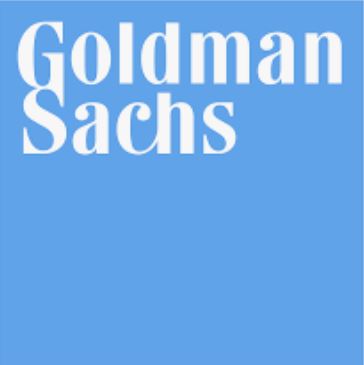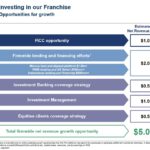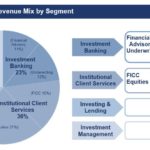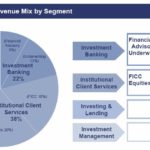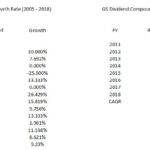Contents
Summary
- A former GS banker has pleaded guilty for his role in the Malaysia's 1MDB corruption scandal. Malaysia is seeking a full refund of the almost $0.6B that it paid to GS for three bond deals.
- Claims of embezzlement and money laundering have led to investigations in the U.S., Singapore, and Switzerland. GS has not publicly admitted wrongdoing and has said it is cooperating with authorities.
- Berkshire Hathaway’s most recent 13-F released mid-November indicates its position in GS has been increased significantly in recent quarters.
- I view the significant recent drop in GS’s stock price as a buying opportunity.
Introduction
One of Warren Buffett’s investment related quotes that resonates with me is that it is wise to be “Fearful when others are greedy and greedy when others are fearful.” To follow this investment philosophy requires one to take somewhat of a contrarian view.
This brings us to the matter of Goldman Sachs (GS), one of the leading investment banking, securities, and investment management companies throughout the world.
Near the end of January 2018, after GS released its FYE2017 results on January 17, 2018, I looked at GS as a potential investment. Based on my analysis I could not justify GS’s valuation and placed GS on my ‘not now but maybe one day’ list of potential investments.
Fast forward several months and we see that GS’s stock price has been hammered having retraced ~26.6% from its 52-week high. Look closely at GS’s stock chart you will see that the share price has retraced ~$30 in just over a week.
I can certainly appreciate how many GS shareholders may not be pleased given that GS repurchased:
- 3 million shares at an average cost per share of $264.32, for a total cost of $0.8B in Q1;
- 5.3 million shares at an average cost per share of $234.93, for a total cost of $1.24B in Q3.
Given that GS is currently trading a $202.12 it is readily apparent this year’s share repurchases were not made at an opportune time.
Recent Events
Leadership Change
Investors familiar with GS are aware that David Solomon, who previously served as president of the company and co-head of its investment banking division, has very recently assumed the role of CEO from Lloyd Blankfein. Blankfein, who had served as CEO since 2006, will stay on as chairman through the end of the year.
As CEO, Solomon will need to address the deterioration in GS’s trading desk business; this business collects client fees to buy and sell stocks, bonds, commodities and currencies.
Back in FY2012, this business unit generated more than half of GS’s revenue. In FY2017, this had shrunk to just over 1/3rd as a calm market and low interest rates pushed investors toward lower-fee index funds and passive funds.
While GS’s trading business has recently shown some resilience, revenue was generated predominantly from bond, currency and commodities trading while revenue from equities stayed stagnant.
As GS’s new leader, Solomon has indicated there will be changes. These include:
- continued investments in technology for trading;
- ramping up diversity efforts that started under Blankfein.
In addition to the above, since trading has become a less reliable source of income over the years, GS released a plan in September 2017 to boost revenue by $5B by 2020, in part by bulking up other parts of the company.
Source: GS - Presentation to Barclays Financial Services Conference - September 12, 2017
As part of this plan, GS has doubled down on Marcus, its consumer arm, which it established in the US in 2016 and subsequently in the UK; Marcus may expand into life insurance, mortgages, auto loans and wealth management services down the road.
Recent results indicate GS is tracking ahead of its goal to generate $5B in additional annual revenue by 2020 as growth initiatives are bearing positive results. The revenue-boosting plan introduced in 2017 has generated $2.5B YTD2018.
Malaysia's 1MDB corruption scandal
GS’s stock price has taken a severe recent hit after it was disclosed that GS has been under scrutiny for its role in helping raise funds through bond offerings for 1Malaysia Development Bhd (1MDB); 1MDB is the subject of corruption and money-laundering investigations in at least six countries.
The U.S. Department of Justice has said ~$4.5B was misappropriated from 1MDB by high-level officials of the fund and their associates from 2009 through 2014; GS helped raise some of these funds.
In fact, U.S. prosecutors filed criminal charges against two former GS bankers in early November 2018 and one of these former employees has pleaded guilty to conspiracy to launder money and conspiracy to violate the Foreign Corrupt Practices Act.
This is certainly not a matter to be taken lightly but I do not view the acts of a couple of rogue employees as any indication of a systemic issue within GS. If I thought this was a systemic issue I would not even consider analyzing the company to determine whether it would be a suitable addition to the FFJ Portfolio.
GS and Berkshire Hathaway (BRK)
I suspect GS will face severe penalties as a result of the above noted corruption scandal but I don’t think this will result in the demise of GS. In addition, I also take comfort that BRK recently significantly increased its GS holdings.
You may remember that in late 2008, GS and Berkshire Hathaway reached an agreement in which BRK purchased $5B of GS preferred stock yielding 10%. BRK also received warrants to purchase $5B of common stock with a strike price of $115/share; BRK had 5 years in which to exercise the warrants.
This transaction was extremely lucrative for BRK!
Interestingly, here we are 10 years later and BRK still remains a GS shareholder. In fact, a review of BRK’s recent 13-F filings shows that after having held ~10,960 million GS shares for many quarters, BRK has recently been increasing its GS holdings. In the June 30 13-F filing, it was disclosed that BRK held ~13.255 million GS shares. In the recently released November 13-F filing I see that BRK has increased its position to ~18.354 million shares.
Business Overview
Readers unfamiliar with GS’s business are encouraged to read The Letter to Shareholders and Part 1 of the 2017 10-K.
Q3 2018 Results
Highlights of GS’s Q3 results can be found on page 1 of its October 16th Press Release.
GS is making significant progress with its investment management business. Assets under supervision (AUS) now exceed $1.55T, while related investment management revenue is ~20% of net revenue compared with 11%-12% before 2008. This type of revenue is relatively stable and is a high-return-on-capital business that is well suited to the current regulatory environment.
Source: GS – Q3 2018 Press Release - October 16 2018
I provide Net Revenue Mix By Segment results for Q1 and Q2 for comparison purposes.
Source: GS – Q2 2018 Press Release - July 17 2018
Source: GS – Q1 2018 Press Release - April 17 2018
Credit Ratings
A comprehensive recap of ALL of GS’s credit ratings, including those of its affiliates can be found here; the credit ratings that are most relevant for my purposes are those for GS Group Inc..
All long-term credit ratings for that entity are satisfactory for my purposes.
Dividend, Dividend Yield, and Dividend Payout Ratio
While the company’s website covers the dividends related to its Preferred Stock, coverage of the common share dividend is not readily available. Since I have been unable to locate a history of GS’s common share dividend on its website I have had to resort to reviewing GS’s 10-K for the past several years to gather the historical annual dividend information required to calculate the compound annual growth rate.
I have calculated the growth rate under 2 different time frames to demonstrate the extent to which GS’s dividend growth was negatively impacted during the Financial Crisis. Even post-Financial Crisis, GS’s dividend growth has exhibited significant variance on an annual basis.
Investors investing in GS are certainly not investing for its dividend yield (it is typically sub 2%). The current $3.15 annual dividend provides a ~1.56% yield based on the current stock price of $202.12.
Based on historical EPS for 2008 – 2017 ($4.47, $22.13, $13.18, $4.51, $14.13, $15.46, $17.07, $12.14, $16.29, and $9.01), the annual dividend payout ratio has fluctuated widely but is typically in the low/mid teens.
GS has repurchased a considerable number of shares in recent years with share count having dropped from 585 million shares as at FYE2010 to 409 million as at FYE2017.
As noted in the Introduction of this article, GS repurchased 3.0 million shares of its common stock at an average cost per share of $264.32, for a total cost of $0.8B in Q1.
No shares were repurchased in Q2.
In Q3 2018, GS repurchased 5.3 million shares of common stock at an average cost per share of $234.93, for a total cost of $1.24B.
The weighted average number of diluted shares outstanding as at the end of Q3 2018 amounted to 392.3 million.
Valuation
GS has generated diluted EPS of $19.21 for the first 3 quarters of FY2018. If I average YTD earnings on a quarterly basis I envision GS generating ~$6.40 in Q4 earnings. This would give me an estimated annual diluted EPS of ~$25.61 ($19.21 + $6.40) which is pretty much in line with the average estimate from multiple analysts.
Using the current $202.12 stock price (November 16th market close) and my diluted EPS projection for FY2018 I get a forward PE of ~7.9. This is attractive when compared with GS’s 5 year average PE of ~12.3.
On November 8, GS was trading at ~$233. Using the estimated annual diluted EPS from above, GS’s PE on November 8 was ~9.1. The ~$30 drop in GS’s stock price in about a 1 week timeframe has now resulted in what I believe to be very undervalued GS shares.
Final Thoughts
I am fully aware that GS shares will likely go through a very rough period given the recent revelation of the Malaysia 1MDB corruption scandal. Sometimes, however, the time to invest in a great company is when there is extremely bad news. Examples include American Express and The Great Salad Oil Swindle or Johnson & Johnson and the Tylenol Crisis or Salomon Brothers.
I do not view GS as a company that is broken. In fact, I view it as a company with a bright (yet challenging) future. The fact GS, was ahead of plan in its goal of boosting revenue by $5B by 2020 suggests to me that GS still has considerable credibility in the business world although I fully understand why some investors would think otherwise.
The acts of a few GS employees have resulted in the evaporation of billions of dollars in GS’s market value almost overnight. This is certainly unfortunate considering GS repurchased over $2B in GS shares this year at much higher prices than the current market price.
In my opinion, however, this misfortune presents a buying opportunity for long-term investors who are prepared to potentially experience some short-term stock price volatility; I do not think GS’s dividend will be cut. I place myself in this category and intend to acquire GS shares although I have yet to decide on the exact number; it will be in the range of 100 - 200 shares.
I wish you much success on your journey to financial freedom.
Thanks for reading!
Note: I sincerely appreciate the time you took to read this article. Please send any feedback, corrections, or questions to [email protected].
Disclaimer: I have no knowledge of your individual circumstances and am not providing individualized advice or recommendations. I encourage you not to make any investment decision without conducting your own research and due diligence. You should also consult your financial advisor about your specific situation.
Disclosure: I am long BRK-b. I do not currently hold a position in GS but intend to initiate a position within the next 72 hours.
I wrote this article myself and it expresses my own opinions. I am not receiving compensation for it and have no business relationship with any company whose stock is mentioned in this article.


